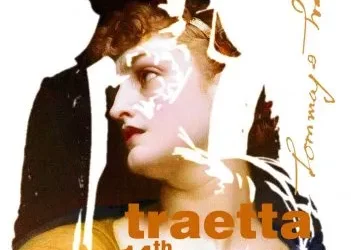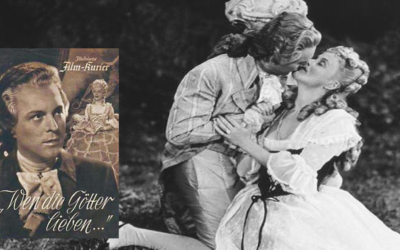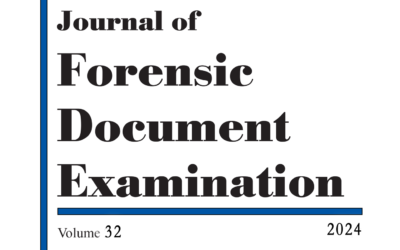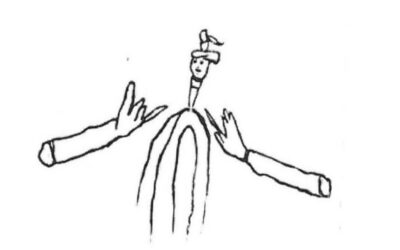Unveiling the Myth
Mozart's Thematic Catalogue Exposed as a Forgery
A groundbreaking forensic analysis reveals that Mozart’s thematic catalogue, long thought to be his own work, is a posthumous forgery. This discovery, detailed in Mozart: The Construction of a Genius, turns centuries of Mozart scholarship on its head, demanding a re-examination of his legacy.
Mozart: The Construction of a Genius
This book offers a fresh and critical look at the life of Wolfgang Amadeus Mozart, challenging the myths that have surrounded him for centuries. We strip away the romanticised image of the “natural genius” and delve into the contradictions within Mozart’s extensive biographies. Backed by nearly 2,000 meticulously sourced citations, this work invites readers to explore a deeper, more complex understanding of Mozart. Perfect for those who wish to question the traditional narrative, this biography is a must-read for serious music lovers and historians.
"The esteemed Mozart’s Thematic Catalogue, spanning 1784 to 1791, is an intricate forgery from the late 18th century."
Mozart: The Construction of a Genius
At the prestigious IGS 2023 Conference in Évora, Portugal, we revealed a bombshell that shakes the foundations of Mozart’s legacy. Our research uncovered that the famous thematic catalogue, long attributed to the composer, is a forgery. Using cutting-edge technology and painstaking forensic handwriting analysis, we have shown that the document was most likely fabricated after Mozart’s death, shattering long-held beliefs about the authenticity of his works.
Mozart’s wife, Constanze, has long been credited with preserving and authenticating this catalogue, yet the document never appeared during Mozart’s life. Only after his death did it emerge, forming the basis for the sales of his unattributed works. This raises significant doubts about Constanze’s role and the narrative surrounding Mozart’s catalogue. As we examine in detail in Mozart: The Construction of a Genius, this catalogue played a crucial part in elevating Mozart’s posthumous reputation, though it is now clear that its authenticity cannot be trusted.
Our bespoke C# software analysed hundreds of characters, comparing the writing in the catalogue with authentic manuscripts and letters from Mozart’s hand. The results were astounding—discrepancies in handwriting, clef shapes, and even the ink used, which was inconsistent with Mozart’s manuscripts. Particularly telling were examples like the word “Bassi,” whose form in the catalogue contrasts starkly with known examples from Mozart’s compositions. The watermarks also provided another clue, revealing connections to documents dated after Mozart’s death in 1791.
This forgery goes beyond simple discrepancies; it alters how we view Mozart’s works catalogued between 1784 and 1791, questioning the legitimacy of many pieces previously believed to be authentic. As explored in our book Mozart: The Construction of a Genius, this discovery raises deeper questions about the image of Mozart that has been manipulated over the centuries for various purposes—ranging from Constanze’s financial gain to nationalistic symbolism and commercialisation of the composer’s legacy.
The scholarly paper A Questionable Catalogue, presented at IGS 2023, corroborates these findings with compelling forensic evidence, adding weight to the notion that the thematic catalogue is not what it appears to be.
This discovery changes everything, forcing scholars to revisit the foundation of Mozart’s legacy. What other elements of the Mozart myth are based on unreliable sources? Our research opens the door to rethinking not just this document but the entire narrative around one of history’s most revered composers.
You May Also Like
The Enigma of Mozart’s Symphony K.73
The Symphony in C Major K.73 has long puzzled Mozart scholars. Touted as a youthful work of prodigious talent, its origins are murky at best. The title “Symphony,” inscribed on the first page of the autograph, is devoid of the composer’s name, casting immediate doubt on its attribution to Wolfgang Amadeus Mozart. Was this truly his work, or is the Symphony yet another victim of overzealous attribution?
Bologna Connections
Quirino Gasparini’s rediscovered Mitridate aria takes centre stage in Bern and Basel, shedding light on Mozart’s reliance on this forgotten composer.
International Traetta Award
We are thrilled to announce that the 14th International Traetta Award has been bestowed upon Anna Trombetta and Luca Bianchini. This prestigious recognition honours their outstanding dedication to musicological research on primary sources of the European musical repertoire, offering significant contributions to reshaping the historiography of 18th-century music.
A Legacy Rewritten by the Shadows of History
Mozart’s image, often regarded as a universal symbol of musical genius, was heavily manipulated by the Nazi regime, a fact largely ignored in post-war efforts to “denazify” German culture. From propaganda-driven films to anti-Semitic narratives, Mozart’s legacy is far more complex and troubling than we are often led to believe.
Unveiling the Truth Behind Mozart’s Thematic Catalogue
Anna Trombetta, Professor Martin W. B. Jarvis from Charles Darwin University, and Luca Bianchini, have published a peer-reviewed article titled Unveiling a New Sophisticated Ink Analysis Technique, and Digital Image Processing: A Forensic Examination of Mozart’s Thematic Catalogue. This research, which underwent an extensive double-blind peer review, has appeared in a journal that serves as a global reference point for forensic document examiners and court specialists.
Unveiling the Truth Behind the Drawing
H. S. Brockmeyer’s latest research unravels the mystery behind a July 5, 1791, letter from Mozart to his wife. This remarkable investigation uncovers the original, unembellished drawing Mozart included—vastly different from the altered version widely reproduced in collections today. The discovery raises significant questions about historical accuracy and the intentional shaping of Mozart’s legacy.







